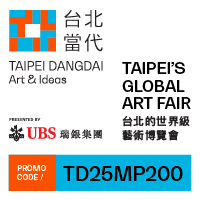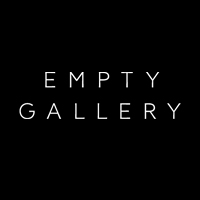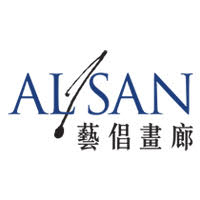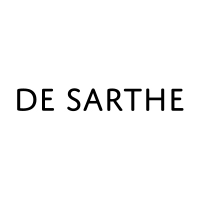“Passports and Identity Documents in the Hands of Artists”
By Chin-Chin Yap

Installation view of "Passports and Identity Documents in the Hands of Artists," at the British Library, London, 2025. Courtesy the British Library Board.
“Passports and Identity Documents in the Hands of Artists” is a new and timely addition to the British Library’s Sir John Ritblat Treasures Gallery organized by Daniel Lowe, the curator of Arabic collections. In a single display case, eight works by seven artists from Iran, Lebanon, Palestine, Syria, and Turkey repurpose the quotidian formats of state-issued documents into analogies for the increasing power of state control over travel privileges and identity formation.
Majdi Hadid’s Documents that I needed to travel outside Palestine (2007)—first published during the same year in the book entitled Subjective Atlas of Palestine—is a panoply of 19 documents and travel proofs that the artist-designer needed in order to travel from Ramallah to Frankfurt. The documentation includes three passports, two identity cards, and assorted transportation tickets and stubs. Hadid’s meticulous array of papers underlines the Kafkaesque process of Palestinian travel, suggesting that the individual state institutions, corporations, and agencies issuing these documents contribute to the piecemeal international securitization affecting Palestinian autonomy and mobility. Jana Traboulsi’s Sorry for Not Attending (2013) was conceived in response to the excessively cumbersome British visa application, which forced her to miss the opening of a Tate Modern exhibition that included examples of her work. Traboulsi’s cheerfully collaged materials referencing Europe, the US, Palestine, and even Asteroid B612—places then difficult or impossible for Lebanese passport holders to access—satirically highlight the inherent prejudice inherent in border policies of the Global North. Gözde İlkin produced Hususi Passport (2009) while participating in the “Reciprocal Visit” workshop at Istanbul’s Depo art space, sponsored by nonprofit artist-run initiative Apartment Project. The age-old social convention of reciprocal neighborly visits is juxtaposed with the coveted travel privileges of the “Hususi” or Special/Green Passport, which is available to certain Turkish civil servants and white-collar professionals and their relatives, permitting visa-free travel to most European countries.

Installation view of "Passports and Identity Documents in the Hands of Artists," at the British Library, London, 2025. Courtesy the British Library Board.
Artists also use the passport’s format to contrast organic, inconstant experience and memory with the rigidity of state-imposed measurements of space and time. Cambridge-based Syrian artist Issam Kourbaj’s Leave to Remain: a Single Syrian Grain, Airbourn (2023) draws upon themes of forced migration and regenerative ecology that thread through his multimedia practice. Kourbaj wrote the work’s title in French and Arabic on a UK postage stamp affixed to his expired Syrian passport, deftly layering decades of colonial intervention and neo-imperialism in Syria with a few simple gestures. “Leave to Remain” is both a legal term defining overseas nationals’ permission to reside in the UK and a discomfiting and oxymoronic pun. Conversely, the ephemerality of an “airborne grain” and its natural trajectory across space and time challenges the bureaucratic fixity of state-issued documents and identities. In a reversal of trajectories, photographer Adnan Farzat decided to return to Syria in 2004, from which his parents had fled two decades prior. His snapshots are captured in Forgotten Moments (2020) using risography, a process of stencil duplication using intense colors and textured prints that are both evocative and imperfect, referencing the nature of memory itself.
Iranian artists Amak Mahmoodian and Batool Showghi explore the biopolitical nature of state control. Mahmoodian’s Shenasnameh (2007–10) transgressively recreates the Iranian identity booklet that holders must regularly update with recent fingerprints and photographs. According to regulations, women must follow a strict template in taking photographs, covering their hair and wearing acceptable makeup. Using a thick black marker, Mahmoodian boldly colors in hair around faces and scrawls over eyes and mouths. She rips one photograph in half and enlarges another crossed-out photograph over a double spread, each change an act of resistance against ubiquitous state and societal control. Showghi’s Immigrant Book No. 3 (2018), meanwhile, comprises mixed-media collages featuring a disconnected group of human faces materialized on identity documents, anxiously floating amid a sea of border stamps and inscriptions. Some faces are attached to stitched lines suggesting bodies, as if awaiting the right stamps to fully materialize.
Jawāz Safarī lil-Qirā’ah [My Reading Passport] (c. 2000s) is the only artifact in this display that is a functional document; it is also perhaps the most affecting. Issued by Beirut’s al-Jana Resource Center for Popular Arts, it is one version of a popular pedagogical aid encouraging child refugees in Lebanon to record their reading progress with stamps. As a political object, the booklet reminds us that education is one of the few, slender pathways for refugee and low-income children in many Global South countries to gain a passport and travel legitimately.
In the context of the Treasures Gallery’s showcasing of artistic and scientific highlights across various civilizations, this recent display highlights the roles of creativity and knowledge production amid the unceasing churn of globalization and migratory flows. Alongside two other displays of contemporary artist books and books about artificial intelligence, these transformed passports and identity documents do not read primarily as records of frustrated journeys, but rather as powerfully charged elements of alternative futures.






